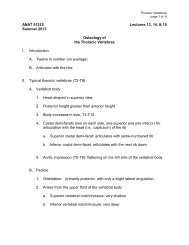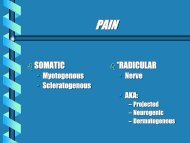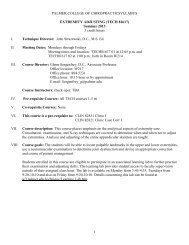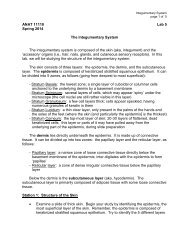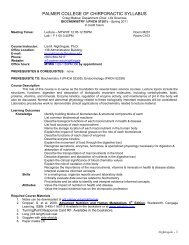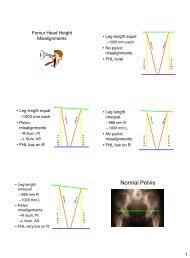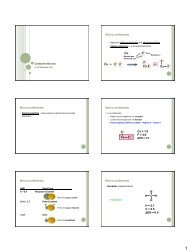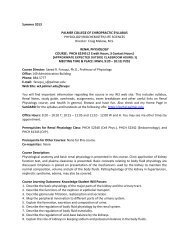POISE-SkyLite User Guide - Palmer College of Chiropractic, Intranet ...
POISE-SkyLite User Guide - Palmer College of Chiropractic, Intranet ...
POISE-SkyLite User Guide - Palmer College of Chiropractic, Intranet ...
You also want an ePaper? Increase the reach of your titles
YUMPU automatically turns print PDFs into web optimized ePapers that Google loves.
CHAPTER 2<br />
USING SKYLITE<br />
Clicking on the six special editing keys (Ins, Home, Pg Up, Delete, End and Pg Dn) will<br />
cause the Emulation Key section to display the relevant binding.<br />
Example<br />
To remap the Find emulation key from its default setting <strong>of</strong> INS key:<br />
1. Click on the Ins key. The Emulation key changes to the Find option.<br />
2. Click on the keys you wish to remap or bind it to. For example, click on the Ctrl<br />
key and the F12 key causing Ctrl+F12 to be highlighted.<br />
3. Click on the Find option in the emulation list and the radio button for Emulation<br />
key in the Map PC Key To section.<br />
To remap or bind this, you MUST click on the Bind Button.<br />
To test this mapping, click on the Find option and then on Show Binding. It should<br />
display Ctrl+F12 on the keyboard diagram.<br />
Note: If you remap an emulation key to a previously defined emulation key, e.g., bind<br />
Find to the Del key, the Del key binding (i.e., Select) will be lost.<br />
Strings<br />
This option associates a string to a PC key. This allows you to set a key so that every time<br />
that key is pressed, a string will be sent to the host. For example, you can set a key so that<br />
you can log <strong>of</strong>f from a host at the touch <strong>of</strong> a button by associating a command such as<br />
the word OFF with a key such as Esc. You cannot assign a string to a key that has been<br />
assigned as an emulation key. To do this you must first move the emulation binding.<br />
To associate a string to a PC key:<br />
1. Click on the PC Key in the Keyboard Mapping dialog that you want to associate<br />
to the string.<br />
2. Under the Map PC Key To section, select String.<br />
3. Enter the required text in the field to the right <strong>of</strong> String. If a carriage return is<br />
required as well, then enter a Control symbol (^) followed by a capital M.<br />
To set the string to the PC key:<br />
Click on the Bind button.<br />
Clicking on the function keys (F1 through to F12) causes a character string to appear in<br />
the Map PC Key To section next to the String radio button.<br />
To find out if a PC key has a string associated with it:<br />
In the Keyboard Mapping dialog, click on the PC key.<br />
If a key has a string associated with it, the String field in the Map PC Key To section will<br />
display the relevant string.<br />
Macros<br />
Macros are used to automate tasks. If there is a macro that you use frequently, it would be<br />
worth associating a macro with a PC key so that whenever you pressed that key, the<br />
macro would be run.<br />
To map a macro:<br />
1. Click on the Macro radio button and either enter the full path name <strong>of</strong> the macro<br />
in the field next to it, or select it using the Browse button.<br />
2. Click on the Bind button at the bottom <strong>of</strong> the dialog; then click on the OK<br />
button.<br />
<strong>POISE</strong>-<strong>SkyLite</strong> <strong>User</strong> <strong>Guide</strong> 33



